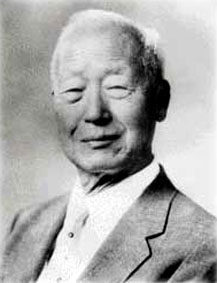SKorean naval ship sinks near NKorea; 40 missing
By JEAN H. LEE, Associated Press Writer – Fri Mar 26, 6:03 pm ET
SEOUL, South Korea – Word that a South Korean naval ship sank in the tense waters around the disputed maritime border with communist North Korea set off panic: The president convened an emergency meeting and the military dispatched a fleet of ships.
Five hours later, 58 sailors had been pulled to safety but some 40 others were missing, reports said. There was no indication early Saturday that North Korea was to blame for the ship's demise, but troops kept a vigilant watch.
Seoul's panic attack — hours after North Korea's military threatened "unpredictable strikes" against the U.S. and South Korea — highlighted the fragility of peace on the divided Korean peninsula.
The two Koreas remain locked in a state of war because their three-year conflict ended in a truce, not a peace treaty, in 1953.
Since then, the two Koreas have fought three bloody skirmishes in theYellow Sea waters. And in January, North Korea fired about 30 artillery rounds not far from Baeknyeong; the South Korean military fired 100 warning shots in response.
The 1,200-ton "Cheonan" was on a routine patrolling mission near South Korea's Baeknyeong Island on Friday night with 104 crew members on board when the ship began taking on water, Rear Adm. Lee Ki-sik of the Joint Chiefs of Staff told reporters.
Unidentified military officials told South Korea's Yonhap news agency that an explosion tore a hole into the rear hull, shutting off the engine, wiping out the power and quickly taking the ship down. A number of crew members jumped into the water, Yonhap said.
Six naval ships and two coast guard vessels, as well as helicopters and ambulances, rushed to save the crew, Yonhap and military officials said. Troops scanned the skies for an attack, at one point firing shots at what officials later speculated was a flock of birds.
President Lee Myung-Bak, meanwhile, convened a late-night emergency meeting with his defense minister and other top military officials. After three hours, and no conclusion about what caused the ship to sink, they agreed to meet again Saturday, presidential spokesman Lee Dong-kwan said..
Nearby Baeknyeong Island, four hours by boat from the South Korean port of Incheon but just 10 miles (20 kilometers) from North Korea, was turned into a triage center, with islanders helping to treat injured crew members, according to cable network YTN.
A naval official told Yonhap there were deaths among the sailors, and YTN said some 40 crew members were missing. However, military officials told the AP they could not confirm deaths, and said 58 sailors had been rescued, with two airlifted for emergency medical treatment.
The waters around Baeknyeong island are rocky, and some senior government officials speculated that the sinking may have been an accident, not an attack, South Korean media said.
"It's looking more and more like it was just an accident that happens on a ship," Carl Baker, an expert on Korean military relations at the Pacific Forum CSIS think tank in Honolulu, said by telephone.
He said Pyongyang was unlikely to attack the far more powerful South Korean military.
"The South Koreans are so much more capable these days than the North that it would be difficult for the miscalculation to happen because I think the North understands its lack of ability," he said.
President Lee ordered the military to focus on the rescue operation, he said
Using this article as a source, we can see that so many years after the start of the war, the tensions between the two Koreas still remain high. Also, we see that North Korea is still very much against US, this could be because North Korea is communist and US is not, or can also show us that US intervention in the Korean War had left a strong and deep mark on North Korea. Perhaps the US had intervened too much.
-Yuxiang









